-
 Bitcoin
Bitcoin $78,376.0795
-4.77% -
 Ethereum
Ethereum $1,548.8063
-11.55% -
 Tether USDt
Tether USDt $0.9994
-0.02% -
 XRP
XRP $1.8818
-9.04% -
 BNB
BNB $551.7480
-4.69% -
 USDC
USDC $1.0000
0.01% -
 Solana
Solana $106.1095
-7.66% -
 Dogecoin
Dogecoin $0.1468
-8.95% -
 TRON
TRON $0.2275
-4.95% -
 Cardano
Cardano $0.5707
-8.85% -
 UNUS SED LEO
UNUS SED LEO $8.9335
-1.49% -
 Toncoin
Toncoin $3.0253
-8.20% -
 Chainlink
Chainlink $11.2802
-7.86% -
 Stellar
Stellar $0.2302
-8.79% -
 Avalanche
Avalanche $16.4569
-4.24% -
 Shiba Inu
Shiba Inu $0.0...01128
-5.14% -
 Sui
Sui $2.0097
-2.68% -
 Hedera
Hedera $0.1463
-4.76% -
 MANTRA
MANTRA $6.2909
1.82% -
 Polkadot
Polkadot $3.5783
-7.89% -
 Bitcoin Cash
Bitcoin Cash $271.3725
-8.06% -
 Dai
Dai $1.0000
0.00% -
 Litecoin
Litecoin $70.0284
-11.01% -
 Ethena USDe
Ethena USDe $0.9986
-0.03% -
 Bitget Token
Bitget Token $4.0832
-5.49% -
 Pi
Pi $0.5780
-5.55% -
 Monero
Monero $201.8656
-4.22% -
 Hyperliquid
Hyperliquid $10.9226
-3.72% -
 Uniswap
Uniswap $5.1124
-8.67% -
 OKB
OKB $51.1549
-4.68%
What is voting power and how is it distributed?
Voting power in blockchain governance is tied to token ownership, impacting network decisions and potentially leading to centralization if concentrated.
Apr 07, 2025 at 08:29 pm

Voting power in the context of cryptocurrencies and blockchain governance refers to the ability of token holders to influence decisions within a decentralized network. This concept is crucial for the operation and evolution of many blockchain projects, as it allows the community to have a say in the direction and policies of the network. Voting power is typically tied to the number of tokens a person holds, meaning that the more tokens one possesses, the greater their influence over the network's decisions.
The distribution of voting power varies across different blockchain projects, but it generally follows one of several common models. In Proof of Stake (PoS) systems, voting power is directly proportional to the number of tokens staked. This means that participants who lock up their tokens to support the network's operations gain the right to vote on proposals. In Decentralized Autonomous Organizations (DAOs), voting power is often distributed based on token ownership, where each token represents one vote. Some projects also use quadratic voting, where the influence of a vote increases with the square root of the number of tokens used, aiming to balance the power between large and small holders.
Understanding how voting power is distributed is essential for participants in the cryptocurrency ecosystem. It affects not only the governance of the network but also the potential for influence and control over its future. The distribution of voting power can impact the fairness and decentralization of a project, as concentrated voting power in the hands of a few can lead to centralization, while a more evenly distributed voting power can promote a more democratic process.
The Role of Voting Power in Blockchain Governance
Voting power plays a pivotal role in the governance of blockchain networks. It allows token holders to participate in decision-making processes, such as approving or rejecting proposed changes to the protocol, electing members of governance bodies, or deciding on the allocation of funds from the network's treasury. This participatory mechanism is designed to ensure that the network evolves in a way that reflects the collective will of its community.
In many blockchain projects, voting power is used to manage and update the protocol. For instance, in Tezos, token holders can vote on protocol upgrades, ensuring that changes to the network are approved by a majority of stakeholders. Similarly, in the case of Decred, stakeholders can vote on changes to the blockchain's rules and the allocation of the project's treasury. These examples illustrate how voting power can be a tool for maintaining the integrity and adaptability of a blockchain.
Distribution Models of Voting Power
The distribution of voting power can be categorized into several models, each with its own set of rules and implications. The most common model is the one-token-one-vote system, where each token held by an individual grants them one vote. This model is straightforward and easy to implement but can lead to centralization if a small number of entities hold a large portion of the tokens.
Another model is the quadratic voting system, which aims to balance the influence of large and small token holders. In this system, the impact of a vote increases with the square root of the number of tokens used. This approach is designed to prevent the wealthiest participants from dominating the voting process while still allowing them to have a say proportional to their stake.
In some networks, voting power is distributed based on staking, where participants must lock up their tokens to gain voting rights. This model is used in Proof of Stake (PoS) systems like Ethereum 2.0, where validators stake their ETH to participate in the network's consensus mechanism and governance.
Impact of Voting Power Distribution on Network Dynamics
The way voting power is distributed can significantly affect the dynamics of a blockchain network. A concentration of voting power in the hands of a few can lead to centralization, where a small group of entities can control the direction of the network. This can be detrimental to the decentralized ethos of many blockchain projects, as it may lead to decisions that favor the interests of the few over the many.
Conversely, a more evenly distributed voting power can promote a more democratic and inclusive governance process. When a larger number of participants have a say in the network's decisions, it can lead to more balanced and fair outcomes. However, achieving a truly decentralized distribution of voting power can be challenging, as it requires a broad and diverse base of token holders.
Challenges and Considerations in Voting Power Distribution
Distributing voting power in a way that promotes fairness and decentralization is not without its challenges. One major issue is the potential for vote buying, where individuals or entities with significant resources can acquire large amounts of tokens to influence voting outcomes. This can undermine the democratic nature of the governance process and lead to decisions that do not reflect the broader community's interests.
Another consideration is the need for active participation. For voting power to be effective, token holders must be engaged and willing to participate in the governance process. Low voter turnout can lead to decisions being made by a small, unrepresentative subset of the community, which can skew the network's direction.
Ensuring the security and integrity of the voting process is also crucial. Blockchain networks must implement robust mechanisms to prevent fraud and manipulation, such as secure voting protocols and transparent vote counting systems. These measures are essential to maintaining trust in the governance process and ensuring that voting power is exercised fairly.
Examples of Voting Power in Action
Several blockchain projects provide real-world examples of how voting power is used and distributed. In the case of MakerDAO, token holders of MKR can vote on changes to the protocol, including adjustments to the stability fee and the addition of new collateral types. This voting power is crucial for maintaining the stability and functionality of the DAI stablecoin.
In the Cosmos network, ATOM holders can vote on governance proposals that affect the network's development and operations. This includes decisions on protocol upgrades, funding allocations, and the addition of new features. The voting power of ATOM holders is a key component of the network's decentralized governance model.
In the Decred ecosystem, stakeholders can vote on changes to the blockchain's rules and the allocation of the project's treasury. This voting power is distributed based on the number of DCR tokens staked, ensuring that those who have a vested interest in the network's success have a say in its governance.
Frequently Asked Questions
Q: How can I participate in voting on a blockchain network?
A: To participate in voting on a blockchain network, you typically need to hold the network's native token. Here are the steps you can follow:
- Acquire the necessary tokens: Purchase or earn the tokens required for voting on the specific blockchain network.
- Stake your tokens if required: Some networks require you to stake your tokens to gain voting rights. This involves locking up your tokens for a certain period.
- Access the voting platform: Use the network's official governance platform or a compatible wallet to access the voting interface.
- Review proposals: Read and understand the proposals that are up for vote. These can include changes to the protocol, funding allocations, or other governance decisions.
- Cast your vote: Follow the platform's instructions to cast your vote on the proposals. Ensure you submit your vote before the deadline.
Q: What are the risks associated with concentrated voting power?
A: Concentrated voting power can lead to several risks, including:
- Centralization: A small group of entities with significant voting power can control the direction of the network, leading to decisions that may not reflect the broader community's interests.
- Manipulation: Entities with large voting power may engage in vote buying or other forms of manipulation to influence outcomes in their favor.
- Reduced trust: If the community perceives that a few entities have too much control, it can lead to a loss of trust in the network's governance process.
Q: How can blockchain projects ensure fair distribution of voting power?
A: Blockchain projects can take several steps to ensure a fair distribution of voting power:
- Implement quadratic voting: This system can help balance the influence of large and small token holders, preventing the wealthiest participants from dominating the voting process.
- Encourage broad token distribution: Projects can use airdrops, token sales, or other mechanisms to distribute tokens widely, ensuring a diverse base of token holders.
- Promote active participation: Educating and engaging the community can increase voter turnout, leading to more representative governance decisions.
- Implement anti-manipulation measures: Robust security protocols and transparent vote counting systems can help prevent vote buying and other forms of manipulation.
Q: Can voting power be delegated in blockchain governance?
A: Yes, some blockchain projects allow for the delegation of voting power. This means that token holders can assign their voting rights to other participants, often in exchange for rewards or other incentives. Here's how it typically works:
- Choose a delegate: Token holders can select a trusted individual or entity to vote on their behalf.
- Authorize the delegation: Use the network's governance platform or wallet to authorize the delegate to vote with your tokens.
- Monitor and adjust: You can monitor the delegate's voting decisions and adjust your delegation if necessary.
Delegation can increase voter turnout and allow those who are less engaged to still participate in the governance process indirectly.
Disclaimer:info@kdj.com
The information provided is not trading advice. kdj.com does not assume any responsibility for any investments made based on the information provided in this article. Cryptocurrencies are highly volatile and it is highly recommended that you invest with caution after thorough research!
If you believe that the content used on this website infringes your copyright, please contact us immediately (info@kdj.com) and we will delete it promptly.
- As clouds gathered over the crypto landscape, a flash tore through the sky: Ethereum, an essential pillar, lost 14% of its value in 24 hours
- 2025-04-08 01:15:11
- The scandal related to ZKasino, a blockchain-based gambling platform, continues to widen
- 2025-04-08 01:15:11
- As We Approach May 2025, Dogecoin (DOGE) Investors Are Facing Uncertainty
- 2025-04-08 01:10:12
- Cryptocurrency markets plunged sharply early Monday, wiping billions from the total market capitalization
- 2025-04-08 01:10:12
- Dogecoin (DOGE) Price Surge Incoming? Analysts Point to Historical Patterns
- 2025-04-08 01:05:12
- Mutuum Finance (MUTM) Token Identified by Algorithms to Deliver Exponential Upside Before 2025
- 2025-04-08 01:05:12
Related knowledge
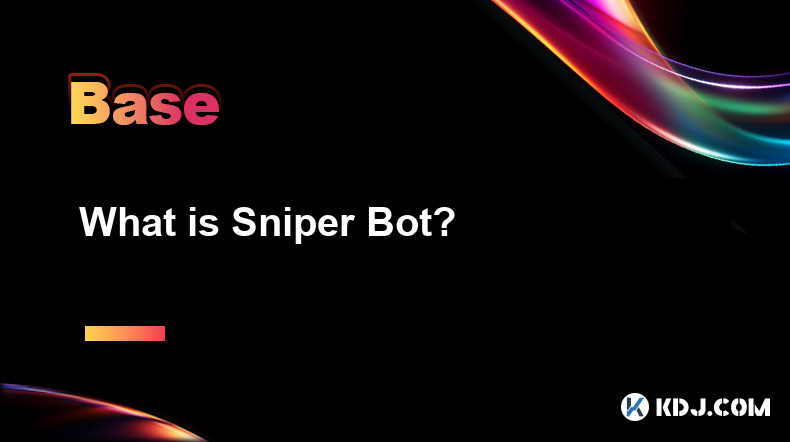
What is Sniper Bot?
Apr 07,2025 at 10:43pm
A Sniper Bot is a type of automated trading software used within the cryptocurrency market to execute trades at optimal times, often milliseconds before other traders. These bots are designed to take advantage of new token listings, price fluctuations, and other market opportunities to buy or sell assets quickly and efficiently. The primary goal of a Sn...
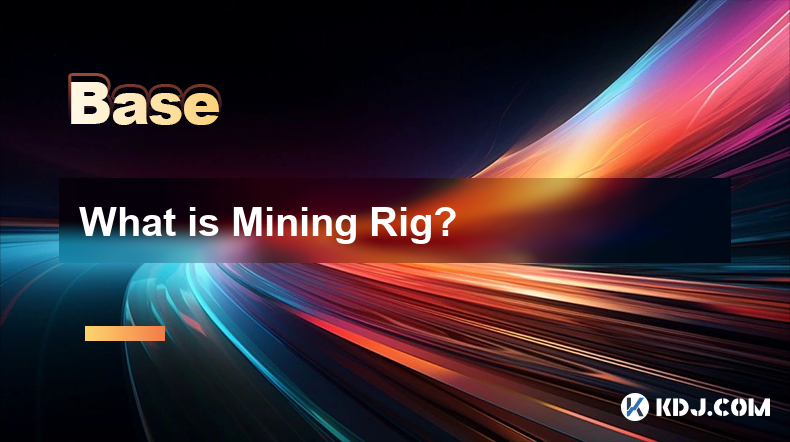
What is Mining Rig?
Apr 07,2025 at 11:08pm
A mining rig is a specialized computer system designed specifically for the purpose of mining cryptocurrencies. Mining, in the context of cryptocurrencies, refers to the process of solving complex mathematical problems to validate transactions and add them to the blockchain. This process requires significant computational power, and a mining rig is buil...
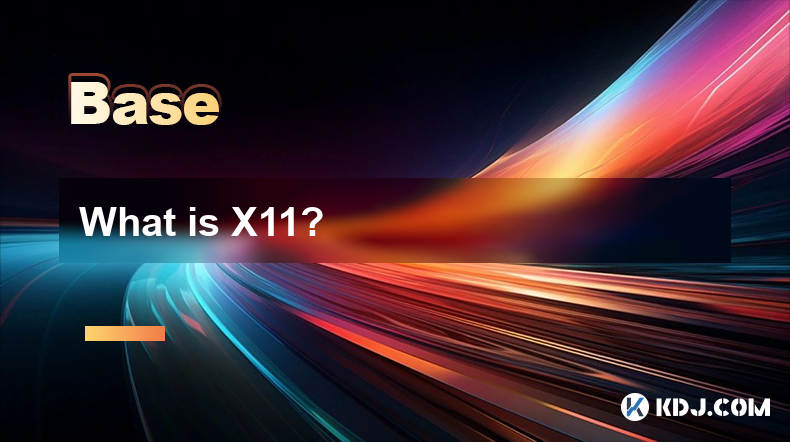
What is X11?
Apr 07,2025 at 09:22pm
What is X11? X11 is a cryptographic hash function used in various cryptocurrencies, most notably in the Dash cryptocurrency. It is designed to provide a high level of security and efficiency, making it a popular choice for blockchain networks. The X11 algorithm is unique because it uses a chain of 11 different hashing algorithms, which enhances its secu...
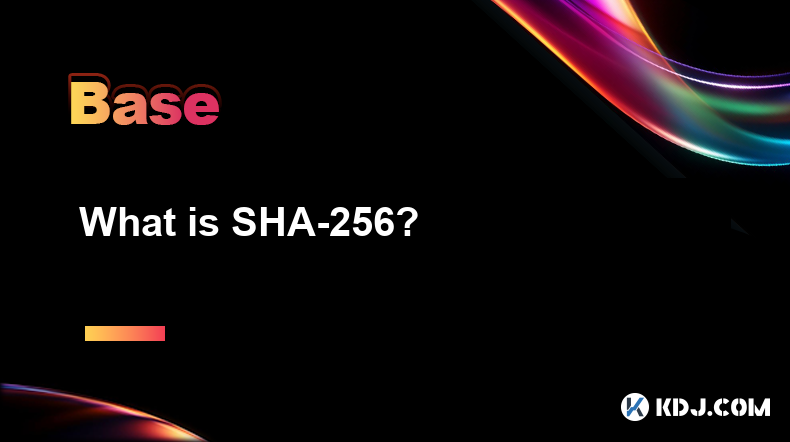
What is SHA-256?
Apr 07,2025 at 11:15pm
What is SHA-256?SHA-256, or Secure Hash Algorithm 256-bit, is a cryptographic hash function that is part of the SHA-2 family of hash functions. It is widely used in the cryptocurrency world, particularly in Bitcoin and other blockchain technologies, for securing data and ensuring the integrity of transactions. This article will delve into the specifics ...

What is an elliptic curve?
Apr 08,2025 at 01:21am
An elliptic curve is a fundamental concept in mathematics that has found significant applications in the field of cryptography, particularly within the cryptocurrency sector. In the context of cryptocurrencies, elliptic curves are used to create secure cryptographic systems that underpin the security of transactions and the generation of digital signatu...
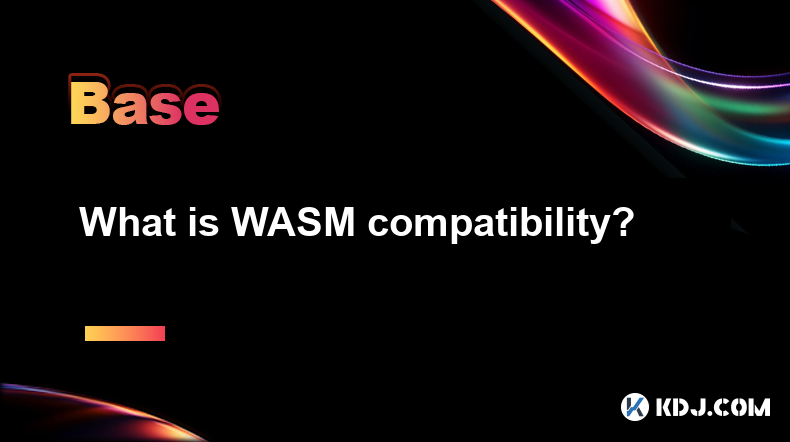
What is WASM compatibility?
Apr 07,2025 at 09:08pm
What is WASM Compatibility? WASM, or WebAssembly, is a binary instruction format for a stack-based virtual machine. It is designed to be a portable compilation target for programming languages, enabling deployment on the web for client and server applications. In the context of cryptocurrencies and blockchain technology, WASM compatibility refers to the...

What is Sniper Bot?
Apr 07,2025 at 10:43pm
A Sniper Bot is a type of automated trading software used within the cryptocurrency market to execute trades at optimal times, often milliseconds before other traders. These bots are designed to take advantage of new token listings, price fluctuations, and other market opportunities to buy or sell assets quickly and efficiently. The primary goal of a Sn...

What is Mining Rig?
Apr 07,2025 at 11:08pm
A mining rig is a specialized computer system designed specifically for the purpose of mining cryptocurrencies. Mining, in the context of cryptocurrencies, refers to the process of solving complex mathematical problems to validate transactions and add them to the blockchain. This process requires significant computational power, and a mining rig is buil...

What is X11?
Apr 07,2025 at 09:22pm
What is X11? X11 is a cryptographic hash function used in various cryptocurrencies, most notably in the Dash cryptocurrency. It is designed to provide a high level of security and efficiency, making it a popular choice for blockchain networks. The X11 algorithm is unique because it uses a chain of 11 different hashing algorithms, which enhances its secu...

What is SHA-256?
Apr 07,2025 at 11:15pm
What is SHA-256?SHA-256, or Secure Hash Algorithm 256-bit, is a cryptographic hash function that is part of the SHA-2 family of hash functions. It is widely used in the cryptocurrency world, particularly in Bitcoin and other blockchain technologies, for securing data and ensuring the integrity of transactions. This article will delve into the specifics ...

What is an elliptic curve?
Apr 08,2025 at 01:21am
An elliptic curve is a fundamental concept in mathematics that has found significant applications in the field of cryptography, particularly within the cryptocurrency sector. In the context of cryptocurrencies, elliptic curves are used to create secure cryptographic systems that underpin the security of transactions and the generation of digital signatu...

What is WASM compatibility?
Apr 07,2025 at 09:08pm
What is WASM Compatibility? WASM, or WebAssembly, is a binary instruction format for a stack-based virtual machine. It is designed to be a portable compilation target for programming languages, enabling deployment on the web for client and server applications. In the context of cryptocurrencies and blockchain technology, WASM compatibility refers to the...
See all articles





















































































